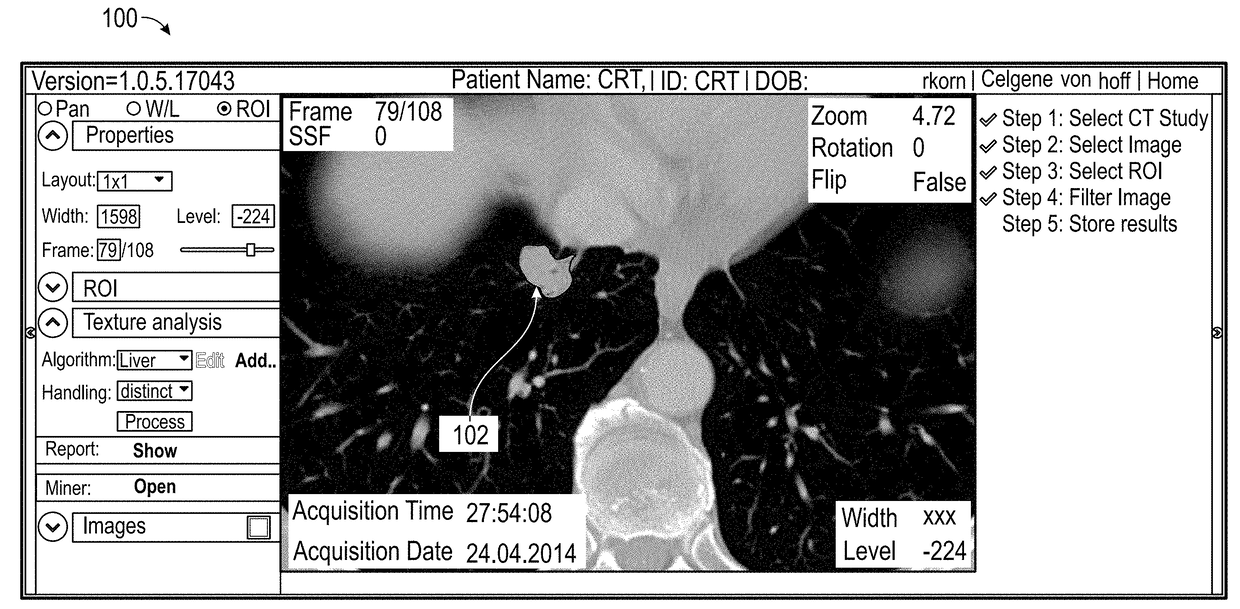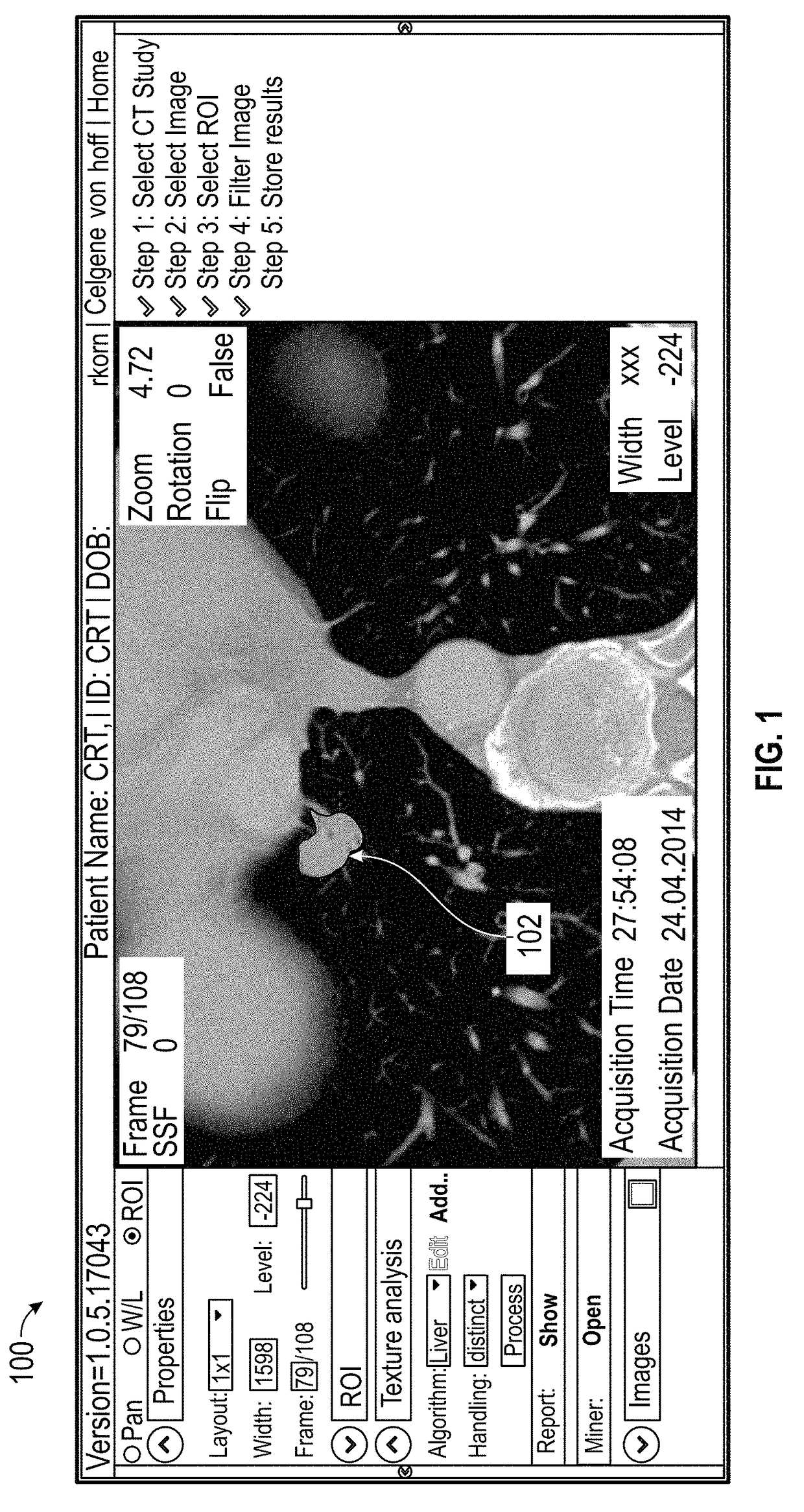Systems and Methods For Predicting Lung Cancer Immune Therapy Responsiveness Using Quantitative Textural Analysis
- Summary
- Abstract
- Description
- Claims
- Application Information
AI Technical Summary
Benefits of technology
Problems solved by technology
Method used
Image
Examples
Embodiment Construction
[0024]The following detailed description of the invention is merely exemplary in nature and is not intended to limit the invention or the application and uses of the invention. Furthermore, there is no intention to be bound by any theory presented in the preceding background or the following detailed description.
[0025]Various embodiments of the present invention relate to methods for developing a biomarker signature for predicting immune therapy responsiveness in lung cancers, including the steps of: i) obtaining cross sectional images from CT, MRI, US, PET, DEXA, Digital Mammography, JPEGS, Angiography, SPECT, gamma cameras, and / or optical platforms; ii) loading the imaging data into a suitable QTA platform (e.g., TexRAD) and selecting a region of interest (ROI) surrounding the tumor in the form of a rectangle, Ellipse, polygon, seed point, or other region encompassing the tumor; iii) selecting either a single slice or multiple slices for QTA; iv) selecting an appropriate filter al...
PUM
 Login to View More
Login to View More Abstract
Description
Claims
Application Information
 Login to View More
Login to View More - R&D
- Intellectual Property
- Life Sciences
- Materials
- Tech Scout
- Unparalleled Data Quality
- Higher Quality Content
- 60% Fewer Hallucinations
Browse by: Latest US Patents, China's latest patents, Technical Efficacy Thesaurus, Application Domain, Technology Topic, Popular Technical Reports.
© 2025 PatSnap. All rights reserved.Legal|Privacy policy|Modern Slavery Act Transparency Statement|Sitemap|About US| Contact US: help@patsnap.com



